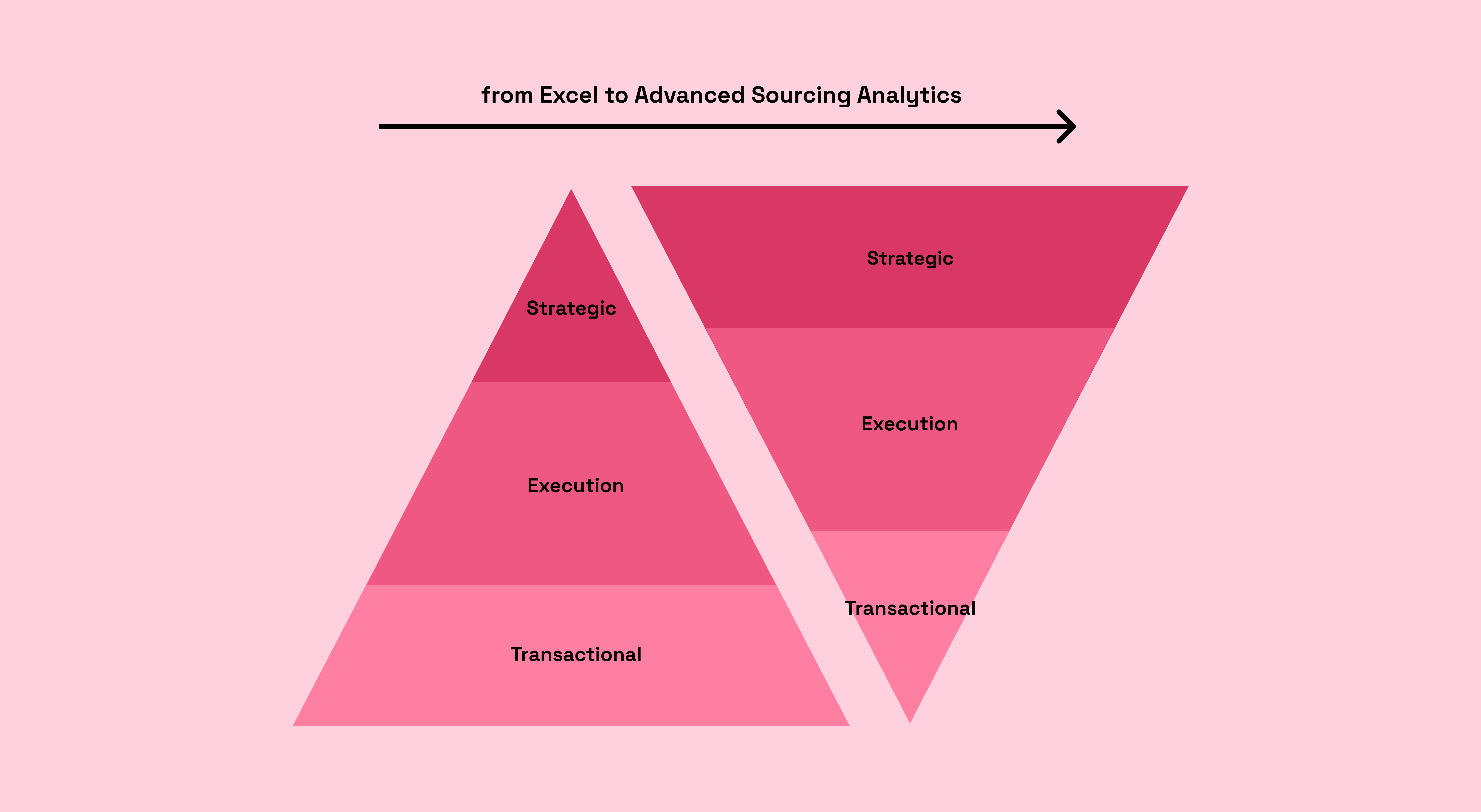Win back time: A Guide to Maximizing Efficiency with Sourcing Analytics

Win back time: A Guide to Maximizing Efficiency with Sourcing Analytics
The speed of change and turmoil in supply chains has reached peak levels over the past few years. Organizations must now navigate swiftly and adaptively to ensure the seamless operation of supply chains and meet the expectations of stakeholders. Businesses often find themselves limited in their ability to handle a limited number of strategic sourcing events or Requests for Proposals (RFPs). This limitation arises not only due to the lengthy and intricate nature of these events but, more significantly, because sourcing managers are overwhelmed with operational tasks and firefighting activities.
This organizational inefficiency is down to process design, requirement splits, and insufficient support from procurement technology. Redesigning the Procurement Operating Model and implementing smart applications can help organizations deliver more value, drive agility, and increase resilience.
Strategically managing your spend category
In Procurement theory, Strategic Sourcing Managers are responsible for strategically aligning internal demands with external supply markets. They collaborate closely with internal stakeholders to fully understand the past, current, and future demand for a given good or service. Simultaneously, they keep a close eye on the developments in the external market to define the best strategy for fulfilling the internal demands.
Words like stakeholder collaboration, market screening, supplier relationship management, innovation scouting and others are used to describe this highly strategic role. Sourcing Managers also execute the strategy through strategic sourcing, supplier negotiations, and contract management, but a lot less time is spent on these tasks. Most importantly, almost no time is spent on the transactional side of things like purchasing or invoice management by Sourcing Managers.
The reality of being a strategic sourcing manager

This ideal 80:20 distribution between strategic and operational tasks is often depicted as an upside-down pyramid. When talking to sourcing managers though, the reality looks more like a standard pyramid. Only 20% of time (at best) is spent on strategic tasks and 80% of time is ‘lost’ on execution and transactional activities.
Reasons for this are abundant. Stakeholder relations are not always as tight as they should be and don’t offer the required clarity on future requirements. Sourcing and supplier negotiations take a long time as data analysis and scenario preparation are highly manual. Setting up contracts in the CLM (Contract Lifecycle Management) system is a proverbial nightmare as all fields need to be filled manually. Purchasing is not aligned with the contract and invoices don’t get paid on time, which upsets suppliers and stakeholders.
In short, very little time is spent strategizing and a lot of time is wasted on firefighting. This is frustrating at best and extremely costly to the organization at worst. People are forced to deliberately ignore the most important part of their job as keeping the business running and stakeholders happy beats out exploring, thinking, and strategizing.
Rethinking the Procurement Operating Model
Turning the pyramid on its head requires a new way of working and should start with a review of the Procurement Operating Model. In short, it’s about designing every aspect of Procurement in a way that supports and strengthens each other across the dimensions Strategy, People, Processes, and Technology.
Unlocking headspace for sourcing managers
Processes and tasks need to be tailored to specific roles or teams with clear responsibilities and handover points. This is a lot to take in, so let’s rephrase it. To not get hung up with distracting activities, a separation of tasks and roles is needed. This is the idea behind most Centers of Excellence. Unfortunately, these models deliver mixed results where the responsibility piece is not fully fledged out.
Nevertheless, designing an operating model for agility is a key step to unlocking headspace for category teams. Providing teams with the right technology is another way to increase efficiency and free up time for value-adding activities. Across sourcing, savings tracking, contract management, and purchasing, suitable tools can tremendously increase productivity.
While many organizations have tried to be efficient by having a single suite solution for managing all these activities, the notion of having a hybrid mix of the most relevant solutions is quickly becoming the new norm. These targeted solutions focus on the user experience and are often more aligned with the practical requirements on the ground. Especially for sourcing managers who are pulled in many directions, this focus can help them free up time.
Increasing efficiency in sourcing events
Advanced bid analytics and sourcing optimization capabilities enable real-time analysis and modeling of large data sets during RFPs. Where historically it took two weeks to review and discuss supplier inputs to spot anomalies and missing or false information, AI-powered bid analytics can uncover these outliers or mistakes immediately upon data upload and provide insights into best possible negotiation strategies. This can reduce analysis time from two weeks to just a few hours and create headspace for more internal discussions and better negotiation preparations.
Driving agility and resilience with holistic decisions
The impact of advanced tools on negotiations is highlighted by experts as AI-based sourcing analytics enable Sourcing Managers to use scenario-based thinking. It allows them to easily review all their strategic options for matching internal demands with external market realities. By integrating different business constraints and market complexities like sustainability, risk or supplier diversity, discussions with internal stakeholders and suppliers become more fact-based.
Taking in a wide range of external information is what we call holistic decisions. It allows sourcing managers to review all their options and increase the quality of the decision process. Especially in multi-round tenders, where sourcing managers had to redo the analysis with every new bidding round, organizations are often able to reduce their sourcing cycle times by 40-90%. This combination of improved decisions and increased efficiencies can vastly increase the agility and resilience of the organization while reducing time-to-market.
Flipping the pyramid on its head
By rethinking the Procurement Operating Model and investing into the right enabling technology, Procurement can achieve the ideal balance between strategic and operational tasks. Sourcing managers can benefit most from advanced sourcing analytics and scenario optimization capabilities. These features not only decrease time spent on analyzing supplier inputs, but also allow sourcing managers to factor business requirements into the decision process.
Archlet has been recognized by Spend Matters and Gartner for making these advanced sourcing analytics capabilities available to every category and sourcing manager by focusing on the user experience and ease-of-use. We’d be happy to discuss how we can help you flip the pyramid on its head.


